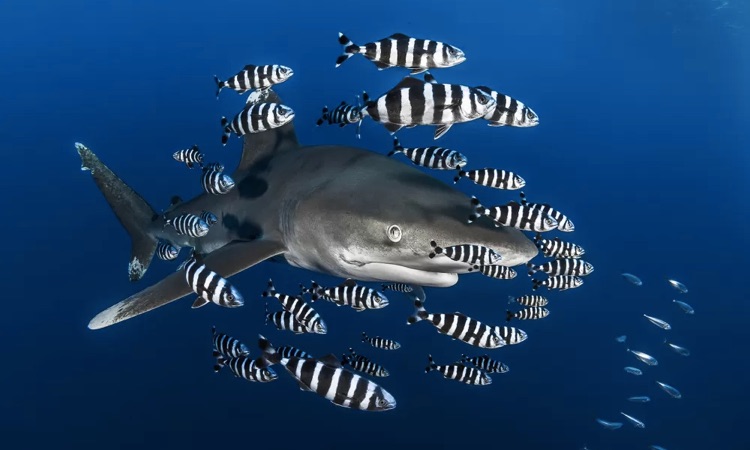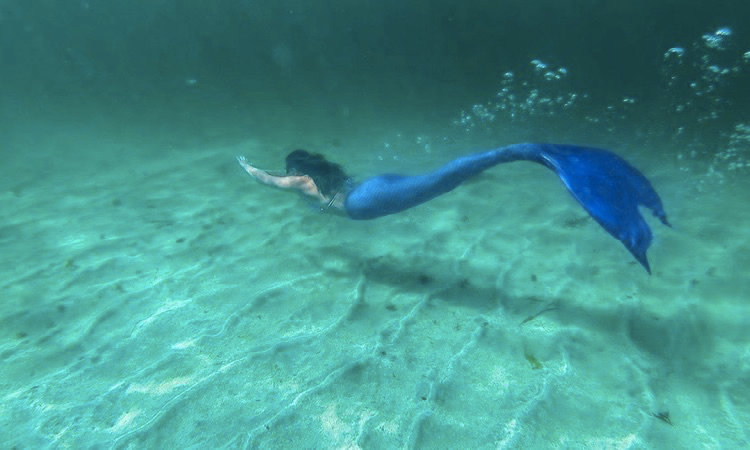The whale shark vs basking shark are the two biggest living shark species, and they are both filter feeders. These two sharks have many things in common, but they differ in several ways. One example of this is their size difference.
The whale shark can reach a length of up to forty feet, whereas the average basking shark is twenty-six feet long.
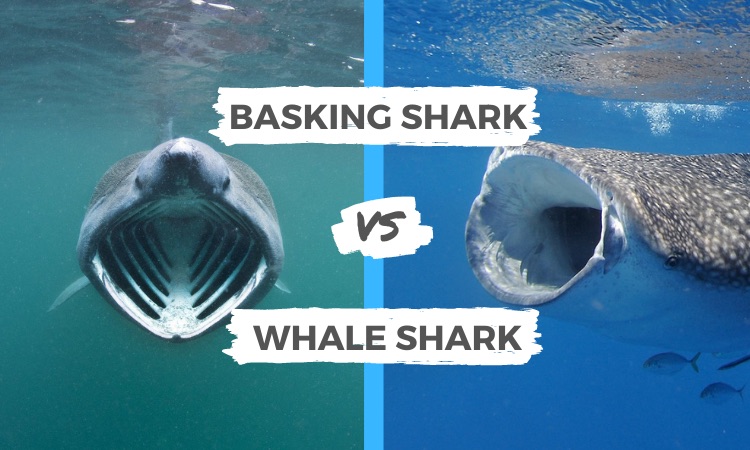
Whale Shark vs Basking Shark
The basking shark vs whale shark are two different species of sharks that live in totally separate locations. Here are the top five significant distinctions between them:
Life Span
Basking sharks can live for about 50 years and whale sharks for around 130. We’ll look at these variations and fascinating facts about each shark in greater detail below.
Size
Basking sharks are considerably shorter than whale sharks, reaching a maximum length of just under 26 feet. In contrast to the whale shark, which reaches a whopping 62 feet in length.
Appearance
Basking sharks have mottled skin and a notably huge mouth. Whale sharks are greyish black with white patches and a big mouth for filtering food.
Basking sharks have a spherical head, whereas whale sharks have a flattened, bowl-shaped head (on top of their heads rather than the bottom).
Habitat
Basking sharks are found all around the world, with some travelling thousands of kilometers to capture plankton to feed on. Whale sharks, on the other hand, prefer warmer seas and generally reside in tropical oceans.
Diet
They use their huge mouths to swim and gather small creatures, such as zooplankton, little fish, fish eggs, and invertebrates. They are both filter feeders that utilize their big mouths to swim and collect these tiny animals.
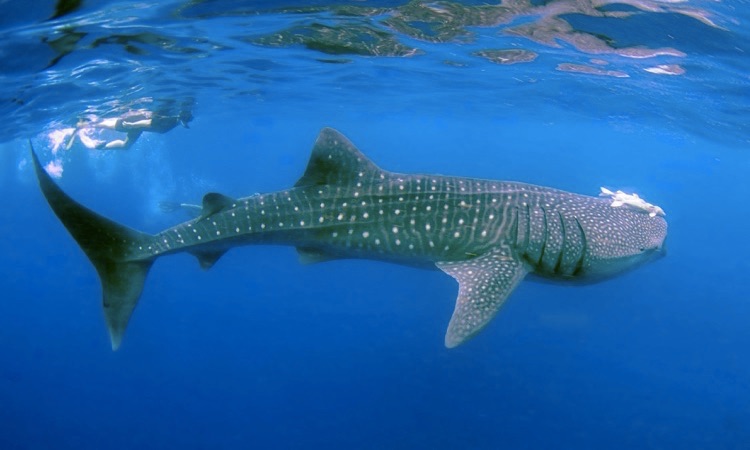
The Basking Shark
The basking shark is a huge shark that, after the whale shark, is considered the largest living fish. Its name comes from its practice of coming to the surface of the water and seemingly sunbathing in the sunlight.
They are solitary creatures by nature, but they have been observed congregating around the best areas of zooplankton. In these cases, social behaviour has been observed. The only surviving member of the Cetorhinidae family is the shark.
Basking Shark Facts
- The shark’s brain is the smallest weight for weight among all sharks.
- It has evolved into a significant source of food for export.
- Because of overfishing, the shark’s numbers are dwindling in many locations today.
- Basking sharks are rarely attacked by predators, and when they are, it’s probably because another shark has already had a taste.
- They are sluggish in movement, similar to the whale shark.
- They can leap completely out of the water or break through its surface.
Appearance
The basking shark has a maximum length of twenty-six feet. It’s generally grey-brown in color with mottled skin. It also has a characteristic huge mouth. The sharks’ caudal fin is distinctive, with a crescent shape. The shark’s enormous mouth evolved to make it a better filter feeder.
The basking shark has a distinctive conical snout and gill slits that extend all the way down its head. The sharks also have around 100 teeth in each row.
Habitat
The basking shark is a migratory cosmopolitan migratory species that may be found in temperate seas all around the world. These sharks migrate hundreds of kilometers throughout the year as they seek out the biggest areas of plankton.
Some migrate south during the winter. They’ve been sighted in Massachusetts, the Amazon River, the Mediterranean Sea, and other various locations on the Earth’s seas.
They usually migrate to deeper locations, such as 3,000 feet or 900 meters, during the colder months.
Diet
The basking shark is a filter-feeder, which means it strains its food through a filtering mechanism while opening its mouth. The basking shark feeds on small fish and invertebrates in the sea.
When it swims forward, its gill rakers are used and it opens its mouth. According to the Proceedings of the Royal Society, it may filter 500 short tones of water per hour.
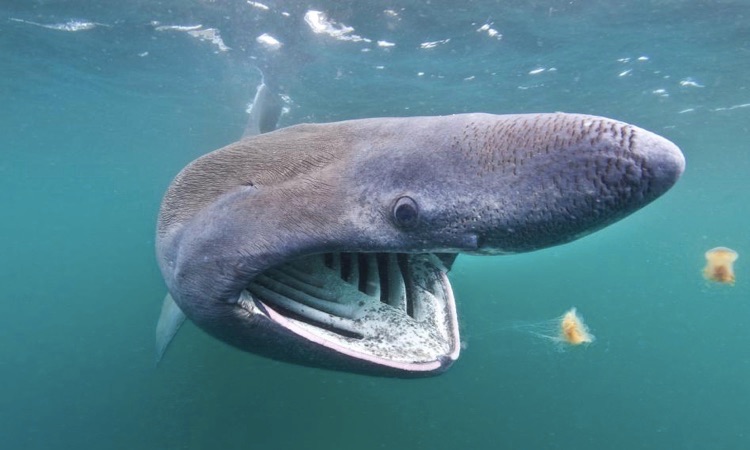
Whale Shark
The whale shark is a sluggish-moving shark that is the biggest living species of shark, followed by the basking shark, and is the sole surviving member of its genus.
In 1828, a fisherman speared a shark near the coast of South Africa and henceforth discovered it. It was named for its enormous size, which is comparable to some whale species. It’s also a filter feeder like baleen whales, taking in water through its baleen plates.
Quick Facts
- Whale sharks can recover quickly from major injuries.
- They have white patches and stripes that are unique to each species.
- Whale sharks are filter-feeding animals.
- They have over 300 tiny teeth, each with a separate function.
- The largest living species of shark is the whale shark.
Appearance
The maximum length of a whale shark was 61.7 feet or 18.8 meters, according to the Guinness Book of World Records. It is also the world’s largest living “non-mammalian vertebrate.”
The shark’s mouth has 300 rows, or more, of tiny teeth in its jaws and 20 filter pads for filtering feed (much like the basking shark). Its mouth is positioned at the front of its head rather than beneath its head.
The head of whale shark is huge and flat, with tiny eyes and five broad sets of gills. These sharks have dark grey skin dotted with pale grey or white spots and stripes.
These are unique to each individual and set the species apart from other sharks. It also has three ridges along its sides that start behind the head and end at the caudal peduncle, or the tapered region behind the dorsal and anal fins.
Habitat
The whale shark prefers tropical seas and is more often found in open ocean. The shark has only been observed below 70 degrees Fahrenheit, or 21 degrees Celsius, a few times in history.
Diet
The whale shark is a filter feeder, which means it eats little ocean-dwelling creatures like kill, plankton, fish eggs, and other things. Christmas Island red crab larvae are also popular. BBC Earth reports that the sharks may consume small fish or squid on rare occasions.
They are only one of three known species of filter-feeding sharks. (The basking shark and megamouth shark are the others.) According to The Shark Research Institute, a young whale shark may consume around 46 pounds of plankton each day.

